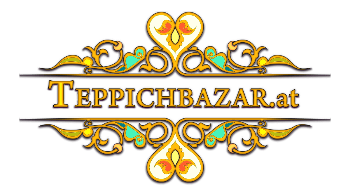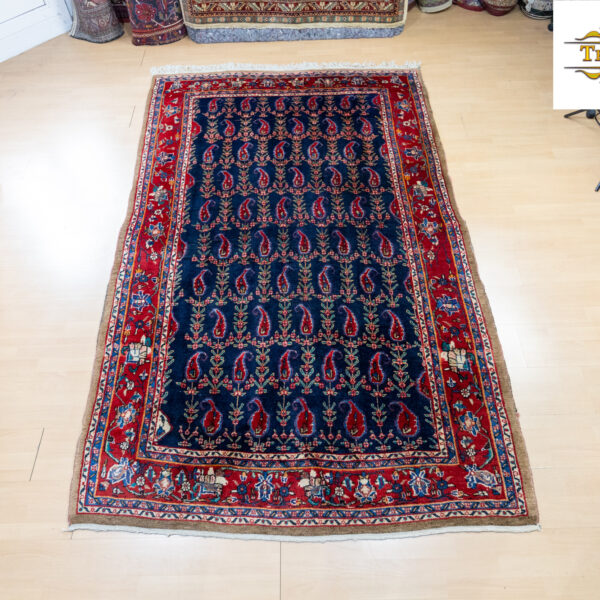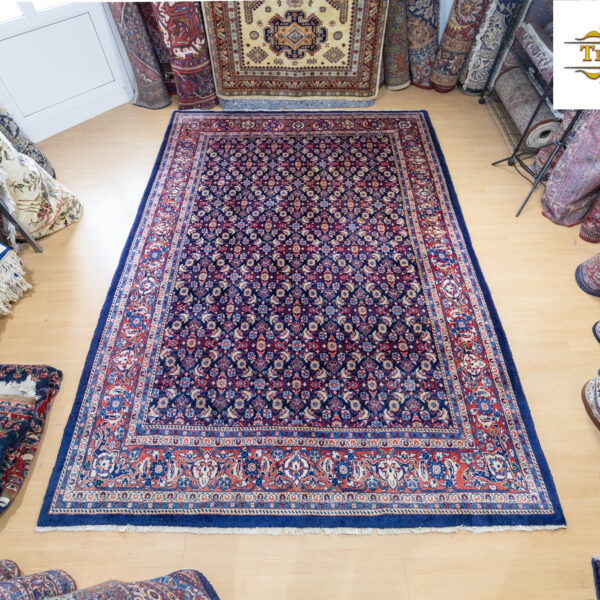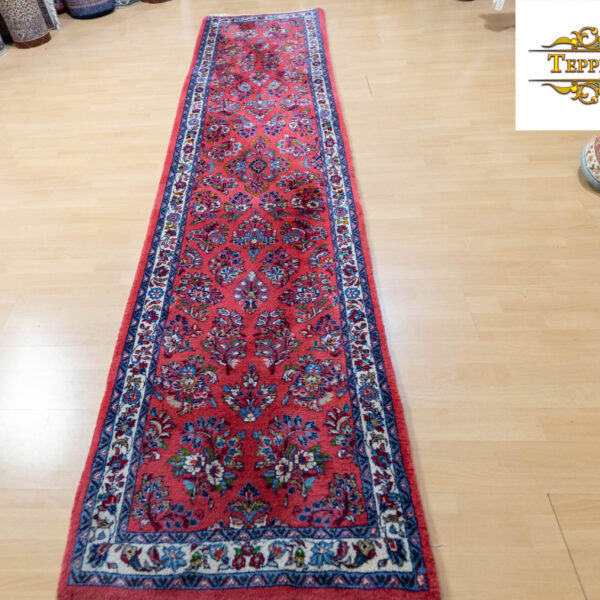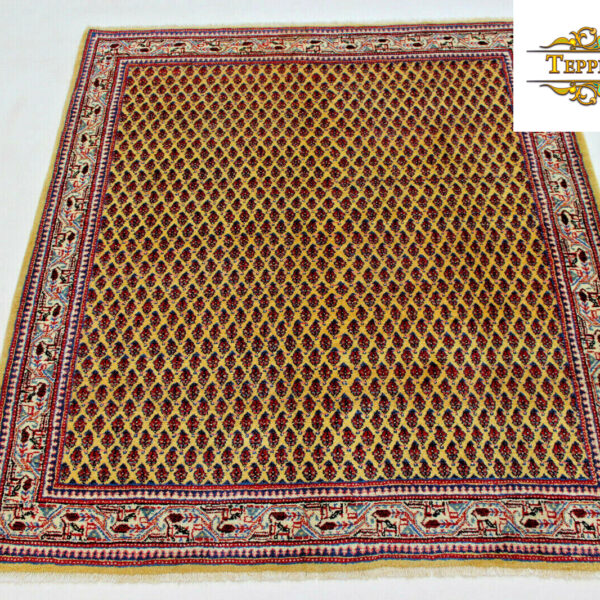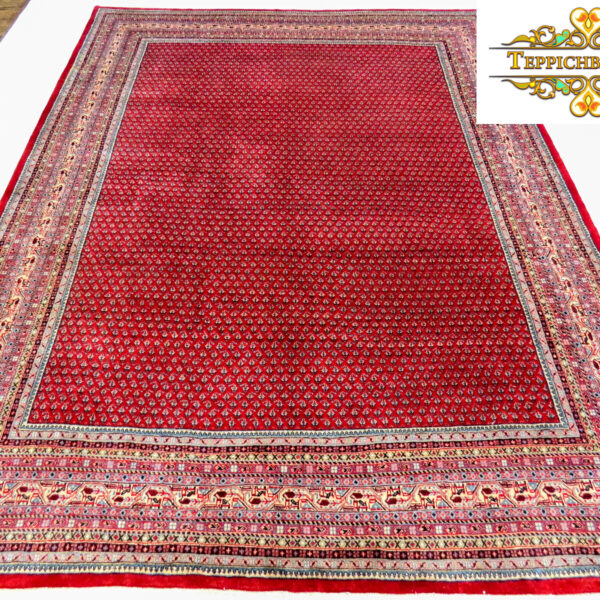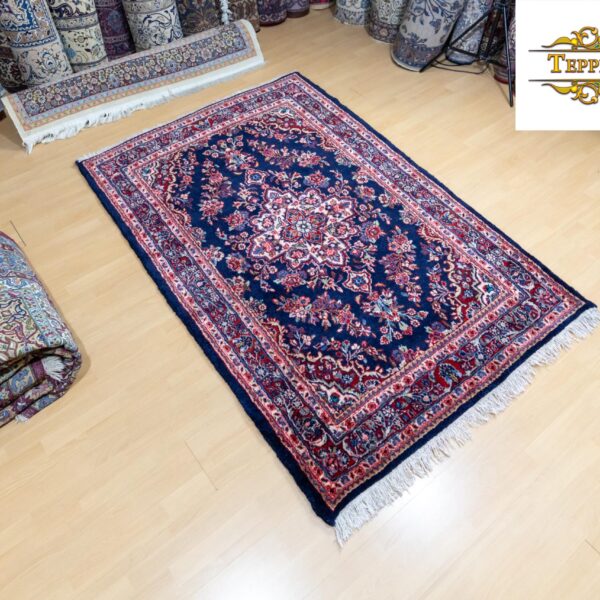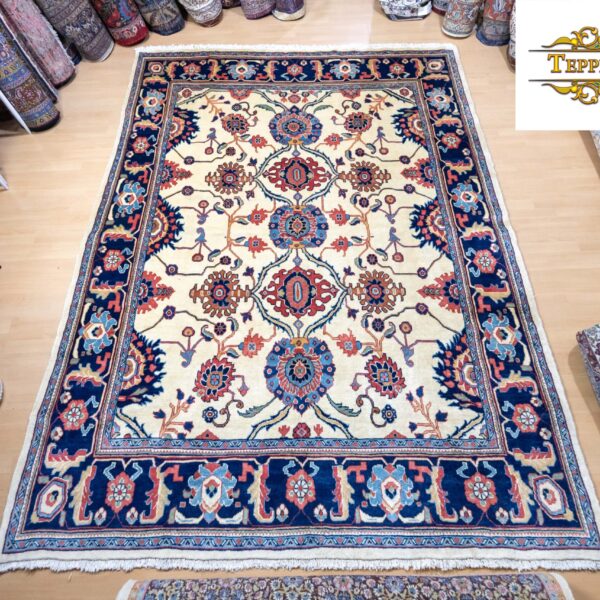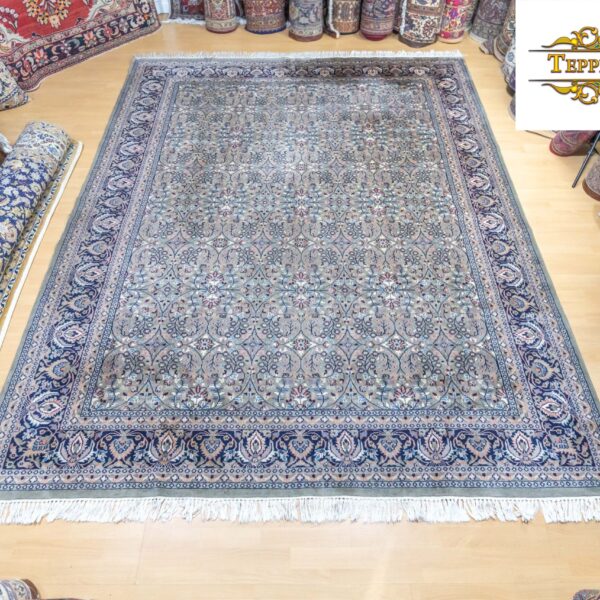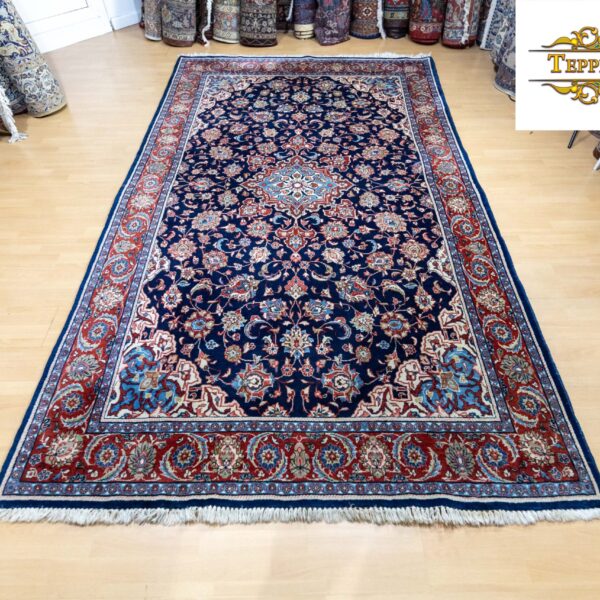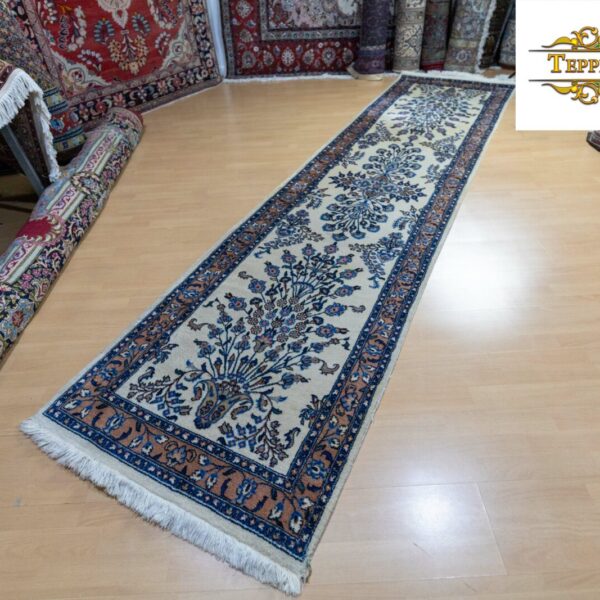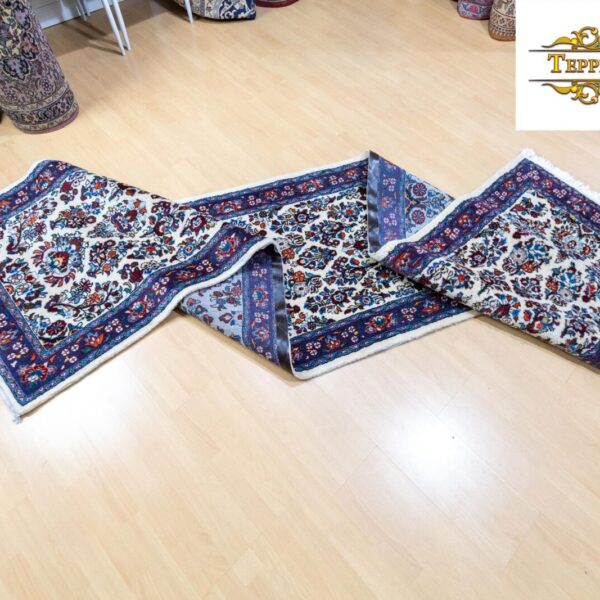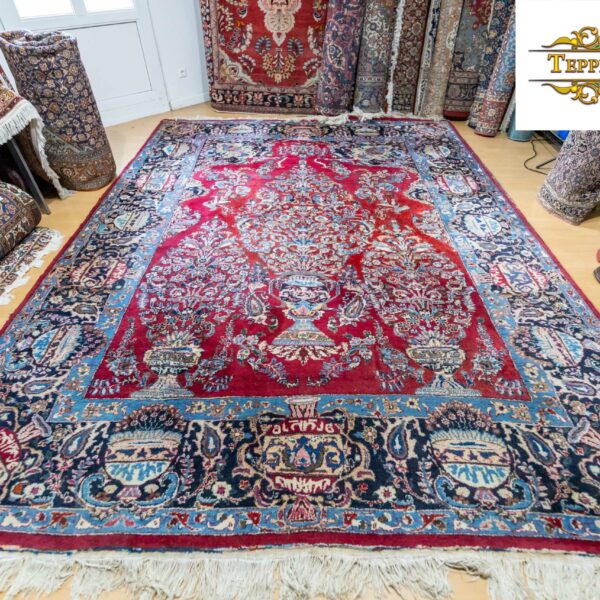saruk
Sarough (also Saruk) carpets
A sarouk rug, also known as the Persian rug Saruk, Sarugh or Sarough, is a type of Persian rug from the Markazi province in Iran. Sarouk rugs (also saruk or sarough) are woven in the village of Saruk, as well as in the town of Arak and the surrounding countryside.
Persian carpet market
Sarouk rugs were made for much of the 20th century. The first successes of the Sarouk carpet are mainly due to the American market. From the 1910s through the 1950s, the "American Sarouk", also known as the "Painted Sarouk", was manufactured.
American customers had an affinity for the sweeping and floral designs of the sarouk. What he didn't like, however, was the color. For example, in the 1920s, 1930s, and 1940s, carpets exported from Iran were dyed a deep, coveted raspberry red upon arrival in the United States. In the second half of the 19th century, a huge market for Persian rugs developed in Europe and the United States. Many traders bought old and antique Persian carpets from all over Iran and exported them to other countries. They used the city of Tabriz in northwestern Iran to export these antiques to Europe via Erzurum in Turkey. Some traders also used the ports of the southern Persian Gulf to export Persian rugs to the United States by ship.
In the last decades of the 19th century, probably around 1880, the supply of these beautiful antique carpets from Persia was rather small. Therefore, many Tabriz merchants decided to open workshops in Sultanabad to produce carpets for the western market. This region had a beautiful tradition of carpet weaving and was a perfect place to set up looms and carpet workshops. Sarouk is a village located 30 miles north of the city of Sultanabad (now Arak). Sarouk is famous for weaving very heavy body mats.
To meet the growing demand for Persian carpets in the west, the Anglo-Swiss company Ziegler & Co. opened branches in Tabriz in 1878 and in Sultanabad in 1883. The first world exhibition for oriental rugs was held in Vienna in 1891 and in London in 1892 and created a growing demand for Persian rugs in the West. Companies such as the Anglo-Italian brothers Nearco Castelli and the Eastern Rug Trading Company from New York established their branches in Tabriz in 1909 and later in Kerman. The Atiyeh brothers from Oregon also established their weaving mill in Kerman after the turn of the 20th century.
Saruk style
Of these cities, Sultanabad and its surrounding towns and villages such as Sarouk, Farahan and Lilihan were the most famous in the United States. After the establishment of offices and branches of foreign companies, designs were created according to the tastes and needs of customers, and new types of Persian carpets were produced. The type of rug now called Ziegler or Sultanabad was made with the patterns and color combinations that Americans loved from the turn of the 20th century. There are many called the American Sarouk. Their colors are reminiscent of dark or dirty pink. They have generic designs with no medallion or a very small floral medallion.
Sarouk rugs are still made today using the same methods as when production began, with the exception of the post-production dyeing work. Known for their exceptional quality and their ability to withstand decades of wear and tear, Saroughs continue to be top sellers. They're made from high-quality, durable wool with a Persian knot.[1] A telltale sign of a sarouk is usually its blue textures, salmon or tomato red color mixed with ivory and blue, and a very traditional floral style. The best modern sarouk rugs come from the city of Ghiassabad.
Sarouk Farahan carpets
Beautiful and valuable antique Persian Sarouk Farahan rugs
Ancient Persian Sarouk Farahan Carpets - Ancient Persian Farahan Sarouk carpets and rugs woven in the Arak region of west-central Iran are remarkable for their ability to combine different qualities and sensibilities. The medallion pattern common on the so-called Farahan sarouk is classic Persian, as are all the small details. But the design is an interesting combination of smooth linearity of curves and geometric styles.
Sarouk-Farahan rugs often resemble the angular design of Herizes and Serapis, but on a much finer scale that lends itself to classically derived designs. This delicacy of design is closely related to the Farahan weaving technique, which is relatively tight and delicate. The colors of Sarouk Farahan rugs and rugs tend to be rich but soft, with an emphasis on terracotta reds, soft blues and greens, and pastel apricots and yellows.
Old Persian Feraghan / Farahan Sarouk carpets
Farahan Sarouk Persian rugs were knotted in the village of Sarouk, but these rugs were given the name “Farahan” in recognition of their exceptional sarouk type. Farahan-Sarouk Persian carpets were made for a hundred year period from the mid-18th century.
They feature an asymmetric knot on a cotton ground; the wefts are tinged with blue or sometimes pinkish red. The weave is very fine and the numerous motifs combine tribal and traditional patterns. They often have a floral border on a pistachio green or pale apple ground.
Feraghan rugs were made for the Persian aristocracy between 1870 and 1913 in a region north of the city of Arak. They are simply woven rugs, long and narrow or room-sized, and typically feature a continuous Herati pattern or meandering floral and leafy motifs.
Sarouk-Feraghan rugs are characterized by rich colors, often with a red field, deep indigo accents and subtle tones of green. Feraghan carpets are finer in texture than other types of Sultanabad carpets and feature delicate designs.
Feraghan sarouk rugs, also called Persian sarouk, are double-knotted rugs, heavier and with a higher knot count than Sultanabad village rugs. The fields are often blue or ivory, and the designs typically feature large medallions or depictions of trees and birds.
They were developed in response to the Tabriz merchants who exported carpets to the west. The designs were supplied to weavers in the Sultanabad region who were having difficulty executing the fine patterns; therefore, these rugs are often somewhat unbalanced and out of place.
Sarouk Feraghans/Feraghan rugs declined in popularity with the advent of American sarouk. American Sarouk rugs were designed to appeal to the American consumer. The colors, typically burgundy or pink, but also blue, have been chosen to harmonize with wooden furniture. The patterns are all-over patterns of flowers, vines and leaves that are woven more sparsely than traditional Persian rugs.
The dyes did not withstand the alkaline wash used in manufacture, so a red background was painted to intensify the color. Today, this region still produces high-quality antique plant-dyed carpets in the tradition of the Sarouk and Feraghan carpets that have been woven in this region for the last two hundred years.
History of Ancient Persian Sarouk Farahan Carpets
Western interest in ancient Persian Sarouk Farahan rugs was sparked by the Vienna Exposition of 1873, where they were displayed. Ancient Persian rugs were originally intended for the elite and ruling class of Farahan, a region of western and central Persia that in the 19th century had developed a unique and elaborate weaving technique inspired by various local patterns.
It was only after 1910 that Farahan Persian carpets began to be produced for purely commercial reasons. Woven 90 to 175 years ago and increasingly difficult to find today, the original designs were a wonderful piece of work due to the superb quality of craftsmanship, quality of the wool, variety of colors and durability. The combination of these factors resulted in unique antique Persian rugs that were in high demand in Europe and the East Coast in the mid-19th century.
These ancient Persian rugs are known simply as “Farahan” and are made from a cotton ground with delicate asymmetrical wool stitches. Herati carpet designs and meandering leaf motifs are perfect examples of the exceptional quality of 19th-century Persian carpets. The designs, with a heavy weave and perfect sunray (or teardrop) characterization of the central medallions, are known as “Farahan Sarouk”. Art lovers and renowned interior designers are always on the lookout for the best antique Farahan Persian rugs. Their incomparable beauty and demand from the elite has resulted in a steady increase in their market value.
There are two popular Farahan patterns: the Farahan Sarouk, also known as the Feraghan Sarouk, and the Farahan. There are also other carpets that combine both styles in equal measure. Old Persian Farahan rugs have several distinctive features that set them apart from any other rug in the world. They exude creativity in their floral motifs and their unusual design, which deliberately increases the attraction of the two. With their graceful, edge-to-edge patterns, usually on a midnight indigo background, Ferahan Persian rugs can exhibit a high number of knots per square inch, with rugs reaching up to 800.000 total knots for a 4 x 7 rug. All rugs have a smooth edge, with some knots in some places. They all have a smooth edge, with some edges showing rare shades of light green to apple green.
Although Persian court/city rugs from major metropolitan areas such as Kashan and Isfahan are more detailed, the antique Persian rugs from Farahan are just as sophisticated but with more refined 'authentic' Persian designs that set them apart from other rugs. The "art of absolute perfection" is a term coined in relation to Persian city rugs that have specific patterns that make their rugs identical.
In contrast, carpets from the Persian region of Farahan do not have this exactitude in design or even styles and colors, allowing the artisan to make a unique artistic contribution to each carpet. These differences in the pattern design and size of the rugs, as well as the variations in color tones, illustrate the uniqueness of the Ferahan and Ferahan Sarouk rugs.
Thanks to the use of numerous natural dyes, the ancient Persian Farahan carpets exhibit subtle but intriguing tones. The midnight indigo shade is the perfect example of a color they were able to make and use as a twist on the standard antique Farahan rug color palette. High-quality Farahan rugs feature extensive use of rare shades of green, ranging from deep forest green to soft celadon to rich apple green.
The Farahan Plain in the Arak/Sultanabad district of Persia, situated between Tehran and Hamadan, is a very fertile agricultural center but is also the home of the Farahan carpets. Despite their cultural roots, Farahan rugs feature a range of floral styles that are similar to traditional Persian rugs as they were designed for wealthy city dwellers and the political class. The fusion of the complex medallions of Tabriz culture with the floral and palmette motifs of Persian sarouk rugs has resulted in majestic yet simple designs that cannot be imitated.
With the use of garish artificial dyes and the adoption of similar, standard textured patterns, carpets woven after the 1920s became less attractive and people mostly avoided them. Old Persian Farahan rugs from the late 18th and early 19th centuries can be found today in a variety of sizes. Most antique Farahan rugs come in room and small spread sizes, but some oversized palace rugs can still be found.
In general, authentic antique Ferahan/Farahan Sarouk rugs, especially when in excellent condition, are much admired and sought after, but increasingly difficult to find. These are collector's rugs that occupy a prominent place among antique Persian rugs.
“Errors and mistakes excepted”
